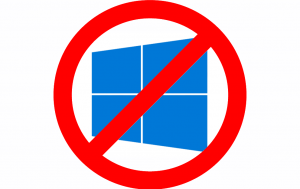Salesforce is one of the most popular CRM software programs on the market. It’s often praised for its robust features such as the industry-specific offerings and its vision to transform customer services to help businesses grow. However, Salesforce can be difficult to manage. Luckily, Salesforce Managed Services can help organizations get the most out of their investment in this business application by offering professional support, training, and implementation so you can start using Salesforce as soon as possible. By working with a Certified partner who provides Managed Services, businesses can enjoy all of the benefits of Salesforce without having to worry about managing the application themselves.
What are Salesforce Managed Services, and what do they include?

Salesforce Managed Services include a wide range of support and administrative services for Salesforce customers. These services can help you maximize the value of your Salesforce investment by providing expert support and guidance on how to best use and configure the platform.
Salesforce Managed Services can also help you keep your system up-to-date and compliant with the latest security and privacy standards. In addition, they can provide valuable insights into how your Salesforce deployment is performing and make recommendations for improvements.
Some of the most common services offered by Salesforce Managed Service providers include:
- System administration: Managing user accounts, permissions, and data access, configuring Salesforce settings, and troubleshooting issues.
- Data administration: Maintaining data quality and integrity, performing data backups, and developing custom reports and dashboards.
- Security and compliance: Ensuring that your Salesforce deployment meets all security and privacy requirements and auditing user activity to identify potential risks.
- Change management: Planning and executing changes to your Salesforce configuration and managing the release of new Salesforce features.
- Application development: Building custom applications on the Salesforce platform and integrating Salesforce with other enterprise systems.
- Training and support: Providing end-user training on Salesforce features and functionality; and 24/7 technical support for Salesforce users.
What are Salesforce Managed Services, and what do they include?
Salesforce Managed Services can help your business grow and succeed in many ways:
- They can provide you with the necessary tools and resources to manage your Salesforce data effectively. This includes access to the latest data reports, analytics, and dashboards.
- They can help you customize Salesforce to meet your specific needs and goals.
- Salesforce Managed Services can also provide you with ongoing support and training to ensure that you are using Salesforce effectively.

In addition to providing you with the necessary tools and resources to manage your Salesforce data effectively, Salesforce Managed Services can also help you customize Salesforce to meet your specific needs and goals. They can do this by providing you with access to the latest customization options and by helping you create custom reports and dashboards.
What are the benefits of using Salesforce Managed Services for your company?
Here are just a few of the benefits that you can enjoy by using Salesforce Managed Services:
- Streamlined administration and management – One of the biggest advantages of using Salesforce Managed Services is that it can help streamline the administration and management of your Salesforce org. With a team of experts handling all aspects of your org, you can free up time to focus on other important tasks.
- Improved security and compliance – Salesforce is a complex platform, and keeping your org secure can be a challenge. But with Salesforce Managed Services, you can rest assured that your data is safe and compliant with all relevant regulations.
- Enhanced performance and stability – When you use Salesforce Managed Services, you can enjoy improved performance and stability for your org. With a team of experts monitoring and managing your org, you can avoid potential issues before they cause problems.
- Increased ROI – Perhaps the most critical benefit of using Salesforce Managed Services is that it can help you achieve a higher return on investment from your Salesforce investment. By ensuring that your org is being used effectively and efficiently, you can maximize your Salesforce ROI.
What should you consider when choosing a provider of Salesforce Managed Services for your company?
There are a few key factors to consider when choosing a Salesforce Managed Services provider for your company. Here are a few things to keep in mind:
- The provider should have extensive experience working with Salesforce. They should be able to provide examples of successful projects they have completed using the platform.
- The provider should have a strong understanding of your company’s specific needs and objectives. They should be able to tailor their services to meet your unique requirements.
- The provider should be able to offer a comprehensive package of services, including support, training, and consulting. They should also be able to scale their services to meet the changing needs of your business.
Salesforce Managed Services can provide your business with a wide range of benefits, from increased efficiency and productivity to improved customer service. When choosing a Certified partner for your Salesforce Managed Services, it is essential to consider the company’s experience and expertise as well as their ability to meet your specific needs. At fusionSpan, we pride ourselves on our ability to provide custom-tailored solutions that help our clients achieve their goals.






